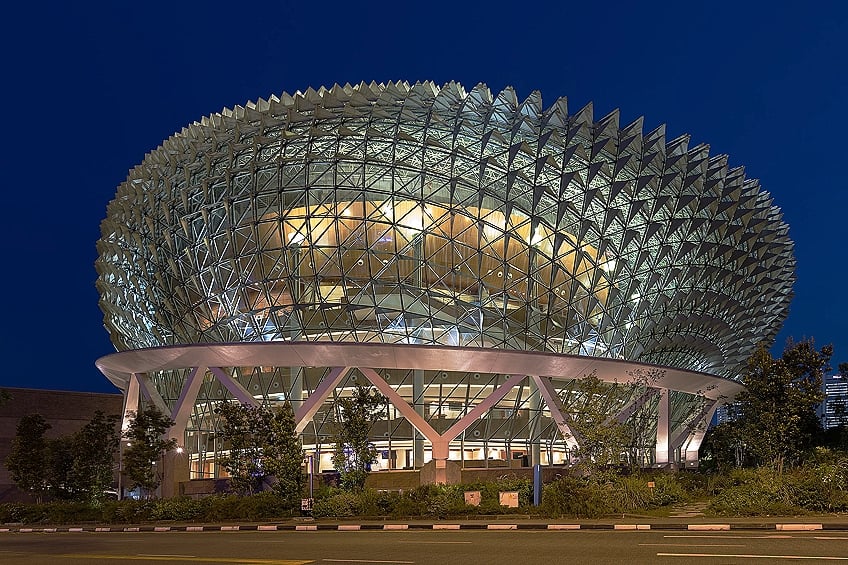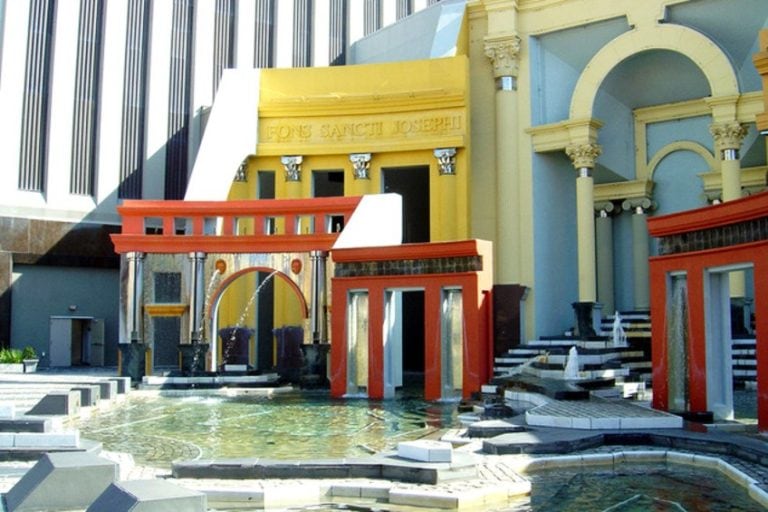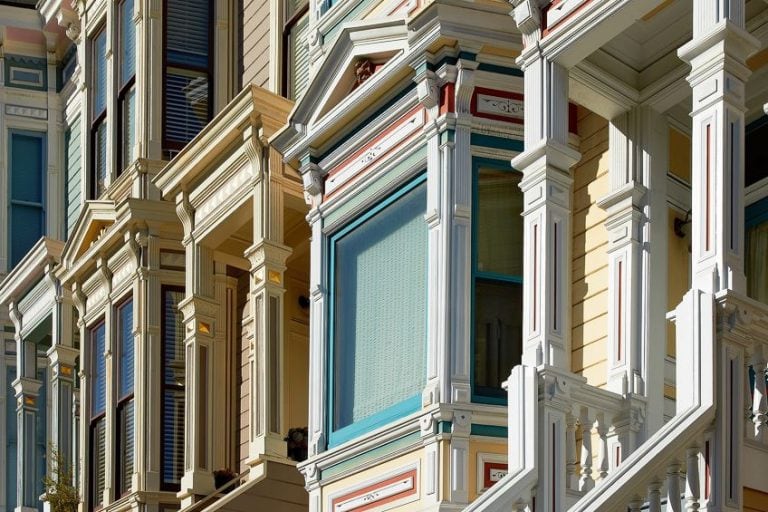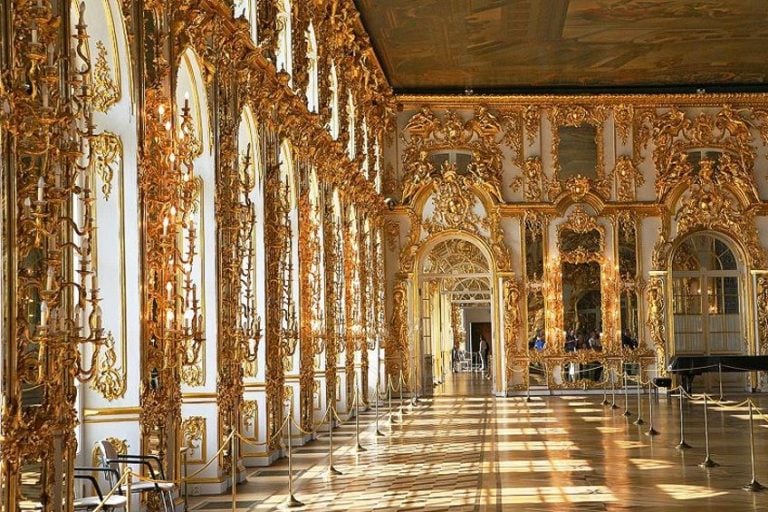Biomimicry Architecture – The Future of Sustainable Design
Biomimicry architecture stands at the forefront of innovative design, drawing inspiration from nature’s remarkable solutions to complex challenges. Embracing the ethos of sustainability, functionality, and aesthetic harmony, biomimicry architecture integrates principles derived from biological systems into the built environment. By observing, understanding, and emulating nature’s strategies, architects create structures that not only coexist harmoniously with their surroundings, but also enhance the well-being of inhabitants and the broader ecosystem. This article explores the profound impact of biomimicry on architectural design, delving into its principles, applications, and the transformative potential it holds for the future of sustainable construction.
Key Takeaways
- Biomimicry architecture applies nature’s strategies to create sustainable and efficient designs.
- It extends beyond aesthetics, integrating biological insights with technological advances.
- Architects and engineers look to nature as a model for innovation and environmental stewardship.
What Is Biomimicry Architecture?
Biomimicry architecture emerges as a discipline that bridges the gap between biology and architecture. At its core, it involves the study of nature’s models, systems, and elements to solve complex human problems. By observing and understanding the principles that organisms have developed over millennia, architects and designers create buildings that are sustainable, efficient, and innovative. This approach to architectural design seeks to not only emulate the form but also to understand and apply the underlying strategies that nature employs. This field of architecture looks beyond superficial aesthetic mimicry, delving into the application of natural strategies to building design.
These strategies could include thermal regulation like that in termite mounds, structural innovations inspired by the sturdy yet lightweight bone structure, or water collection systems that mimic the way desert plants like the Namibian fog-basking beetle harvest water.
By integrating technology with insights from biology, biomimicry architecture can lead to the development of materials and structures that are responsive to their environment, thereby reducing the ecological footprint of buildings and enhancing their sustainability. Key principles underpinning biomimicry architecture encompass energy efficiency and sustainability. By mirroring natural thermal regulation processes, structures optimize energy use, promoting efficiency and reducing environmental impact. Moreover, architects prioritize materials and processes that uphold sustainability, opting for non-toxic and environmentally friendly solutions. Embracing these principles not only enhances the functionality and longevity of architectural designs but also fosters a deeper symbiosis with the natural world, paving the way for a more sustainable future.
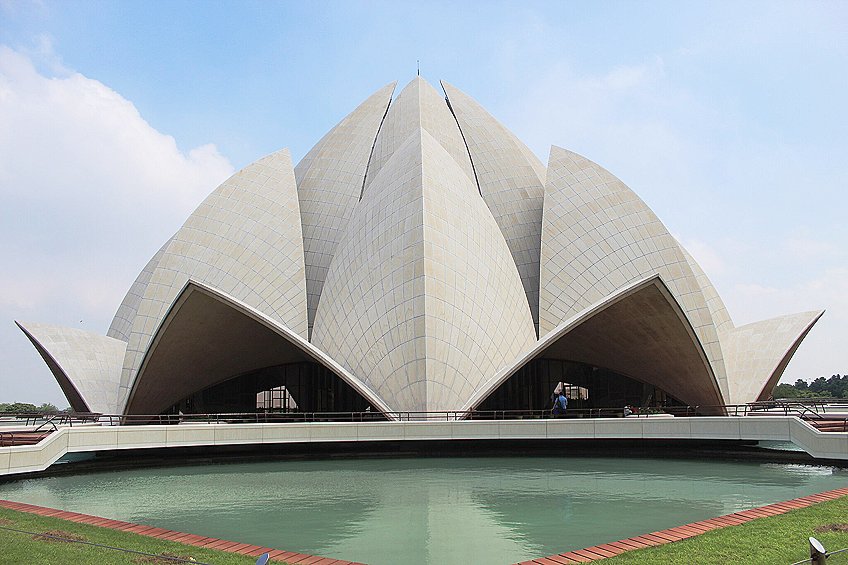
By observing and understanding the mechanisms plants and animals use to adapt and thrive in their environments, architects can create buildings that are more resource-efficient and environmentally compatible. Examples in biomimicry architecture include structures that emulate termite mounds to achieve natural ventilation and building exteriors designed after shark skin, which minimize drag and reduce heating and cooling loads. Biomimicry architecture is not just an aesthetic choice but a practical framework aimed at creating a more sustainable and resilient built environment.
It encourages a shift from human-centered design to eco-centered design, integrating buildings into their surroundings in a harmonious and functional way.
Categories of Biomimicry Architecture
Biomimicry in architecture can be observed at different scales and degrees of complexity. It typically falls into three distinct categories, each offering unique insights and applications.
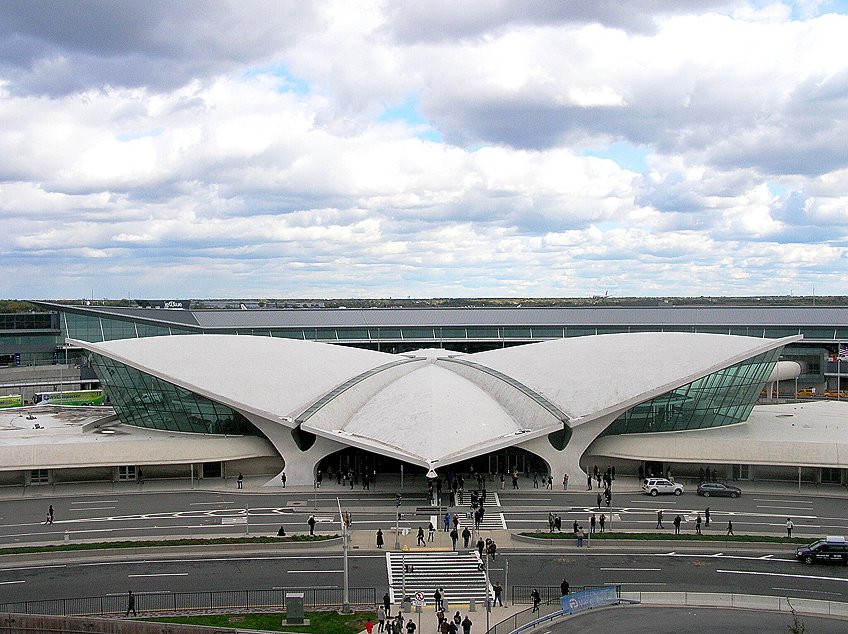
Organism Level
At the organism level, biomimicry involves emulating specific biological forms from nature. Architects might incorporate shapes and structures seen in animals and plants into the design of buildings. For example, the structural efficiency of a honeycomb has inspired lightweight yet strong building materials.
Behavior Level
The behavior level of biomimicry examines how organisms act or react to achieve efficiency and adaptability. This might translate into architecture through adaptive building systems that respond to environmental changes, akin to how a sunflower tracks the sun to optimize photosynthesis.

Ecosystem Level
Finally, the ecosystem level looks at the complex interrelationships within ecosystems to inspire sustainable and self-sufficient designs. Architects may design buildings that mimic the cyclical energy and waste systems found in nature, leading to closed-loop processes that minimize environmental impact.
Foundations of Biomimicry in Architecture
Biomimicry in architecture leverages the genius of nature as a guide to innovation, creating structures that are sustainable, efficient, and integrated with their environment. This section explores the guiding principles, the nature-inspired features utilized in design, and the evolution of biomimicry in architectural practice.
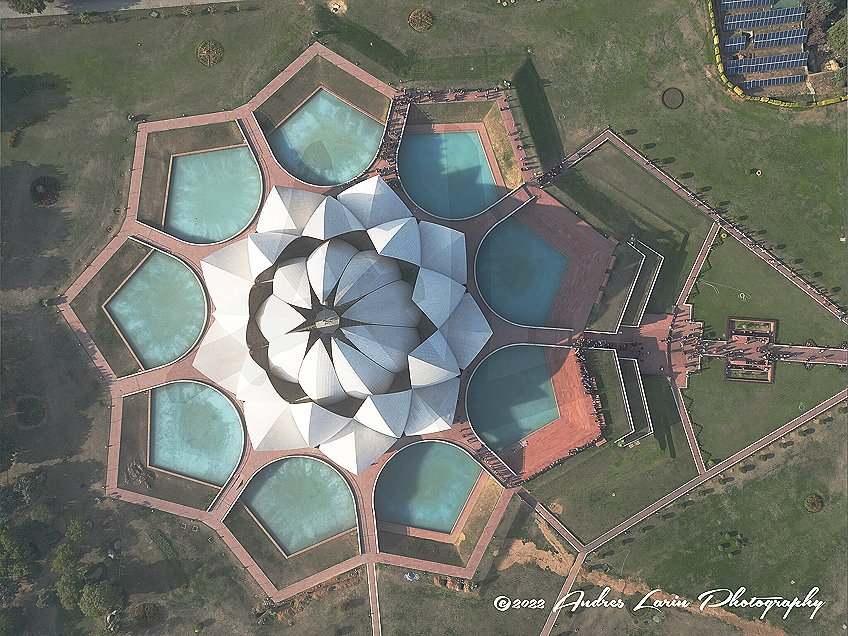
Principles of Biomimicry
Biomimicry operates on the fundamental idea that nature, through billions of years of evolution, has already solved many problems humans face in design and construction. Key principles include sustainability, where designs meet needs without compromising the future, resource efficiency, ensuring minimal use of energy and materials, and adaptation to changing environments, a concept mirrored from organism survival strategies.
Architectural Features Inspired by Nature
Nature’s influence on architecture materializes in various features, where structural optimization is drawn from natural forms like honeycomb patterns, ensuring strength and efficiency. Temperature regulation techniques inspired by termite mounds promote natural ventilation and stable interior climates, enhancing comfort and reducing energy consumption.
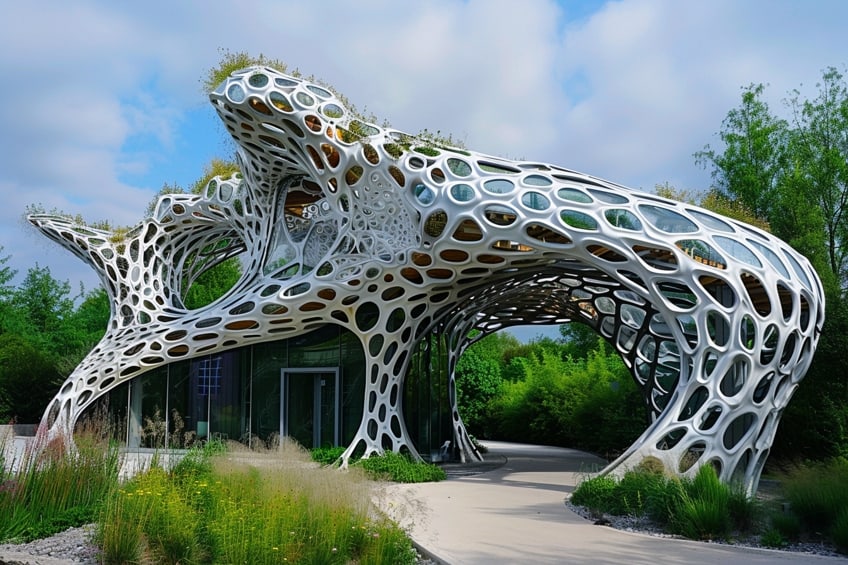
Additionally, water collection systems imitate the way plants and insects collect and channel water, showcasing how biomimicry fosters innovation in sustainable design practices. Architects meticulously study these systems to incorporate biologic insights into modern buildings.
Evolution of Biomimicry in Architectural Design
Biomimicry’s integration into architecture has evolved from early conceptual recognition to a sophisticated multidisciplinary approach. Janine Benyus popularized the term in 1997, and since then, architects have refined the way they implement nature’s lessons, employing advanced technology to replicate biological effectiveness in buildings.
The field has grown to include a diverse range of projects globally, demonstrating the versatile applications of biomimetic architecture.
Technological Integration and Materials
In the field of Biomimicry Architecture, the selection of materials and the application of cutting-edge technologies play crucial roles in achieving sustainability and efficiency. These components are pivotal in emulating biological systems and integrating them into architectural design.
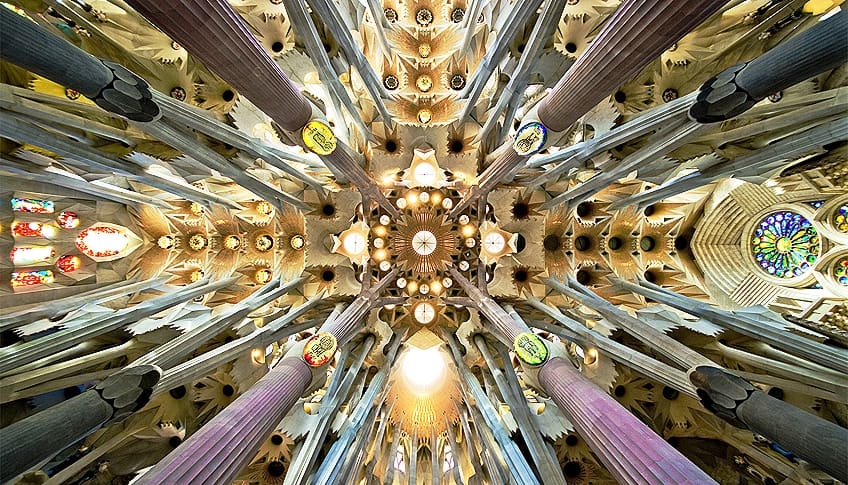
Advanced Materials in Biomimicry
Biomimetic architecture often utilizes ETFE (ethylene tetrafluoroethylene) for its high durability and translucency. A notable instance is the Eden Project in the UK, which features a series of biomes composed of ETFE cushions, mimicking cellular structures and offering high material efficiency.
This material also contributes to the longevity of structures, reducing the need for frequent replacements and thus aligning with principles of sustainable design.
Technological Advancements and Sustainability
Technology’s role in biomimicry architecture extends to the precise and efficient construction through methods like 3D printing and additive manufacturing. These technologies facilitate intricate design and the ability to produce complex forms that are often found in nature. They also minimize material waste, contributing to sustainable practices in construction. The use of these technologies has been instrumental in pushing the boundaries of biomimetic materials and design, allowing architects to achieve both aesthetic and functional prowess.
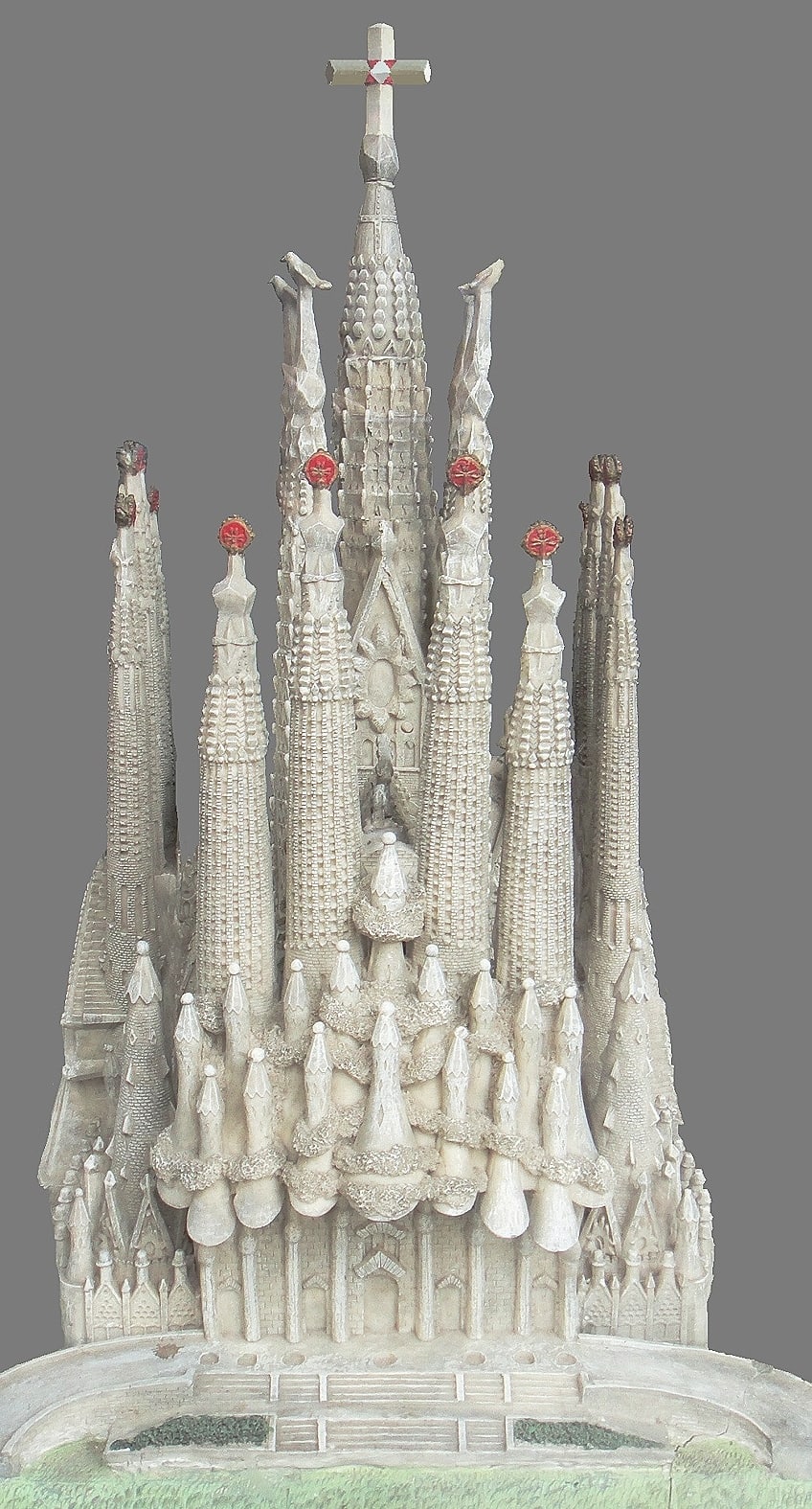
Famous Design Examples
In the realm of architecture, biomimicry has given rise to striking and functional structures worldwide. Architects have borrowed forms and principles from nature to craft buildings that are not only aesthetically pleasing but are also efficient and environmentally harmonious.
This section will explore prominent buildings that encapsulate the essence of biomimicry.
Milwaukee Art Museum (2001)
| Year of Construction | 2001 |
| Architect | Santiago Calatrava |
| Location | Milwaukee, Wisconsin, United States |
The Milwaukee Art Museum, with its Burke Brise Soleil, has a kinetic wing-like sunshade that opens and closes like the wings of a bird. Designed by Santiago Calatrava, this movable sunscreen responds to environmental conditions, an example of biomimicry in dynamic architectural form.
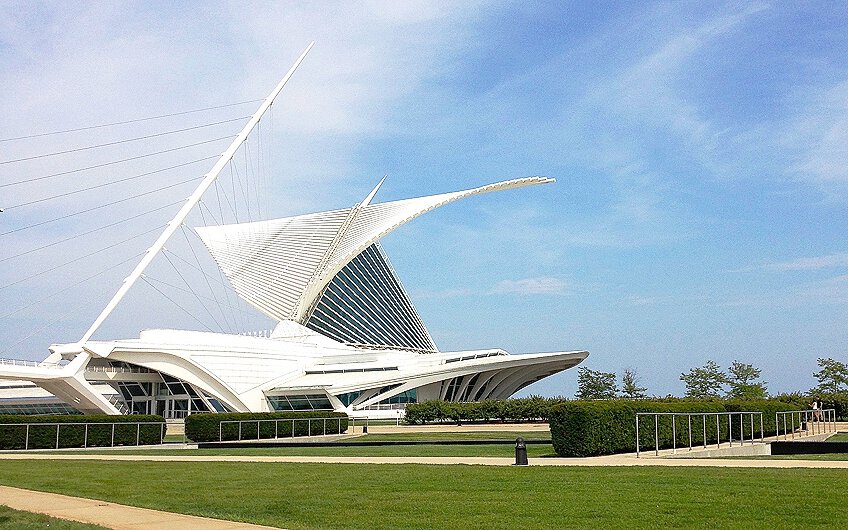
Esplanade Theatre (2002)
| Year of Construction | 2002 |
| Architect | Michael Wilford and DP Architects |
| Location | Singapore |
The Esplanade Theatre in Singapore, often likened to the spiky durian fruit, is a masterpiece in biomimicry design by DP Architects. The twin domes are covered with triangular aluminium sunshades, reminiscent of the durian’s tough exterior, which serve as a functional element to moderate the tropical sunlight.
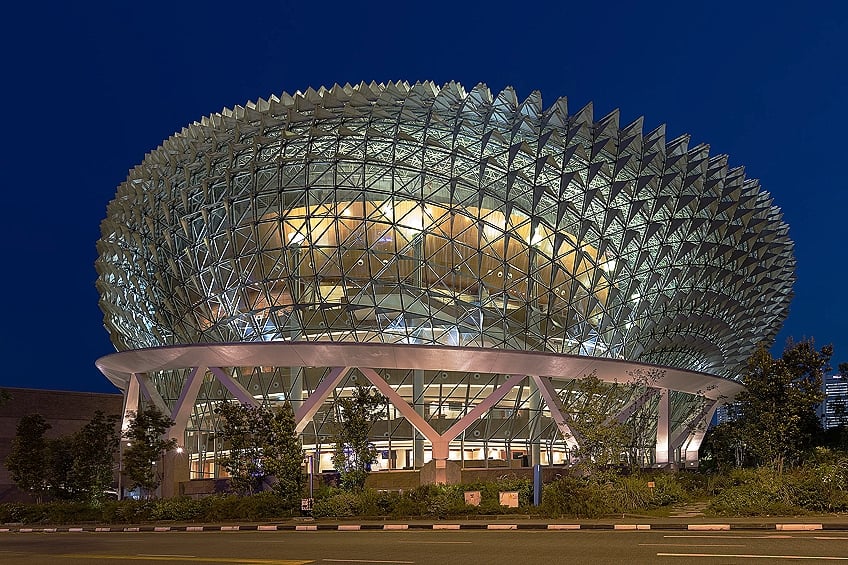
The Gherkin (2004)
| Year of Construction | 2004 |
| Architect | Foster and Partners |
| Location | London |
30 St Mary Axe, colloquially known as the Gherkin in London, designed by architect Norman Foster, incorporates biomimicry through its aerodynamic shape and energy-efficient methods inspired by the Venus flower basket sponge. The Gherkin’s diagrid pattern mimics the sponge’s structure, contributing to the building’s stability and ventilation system.
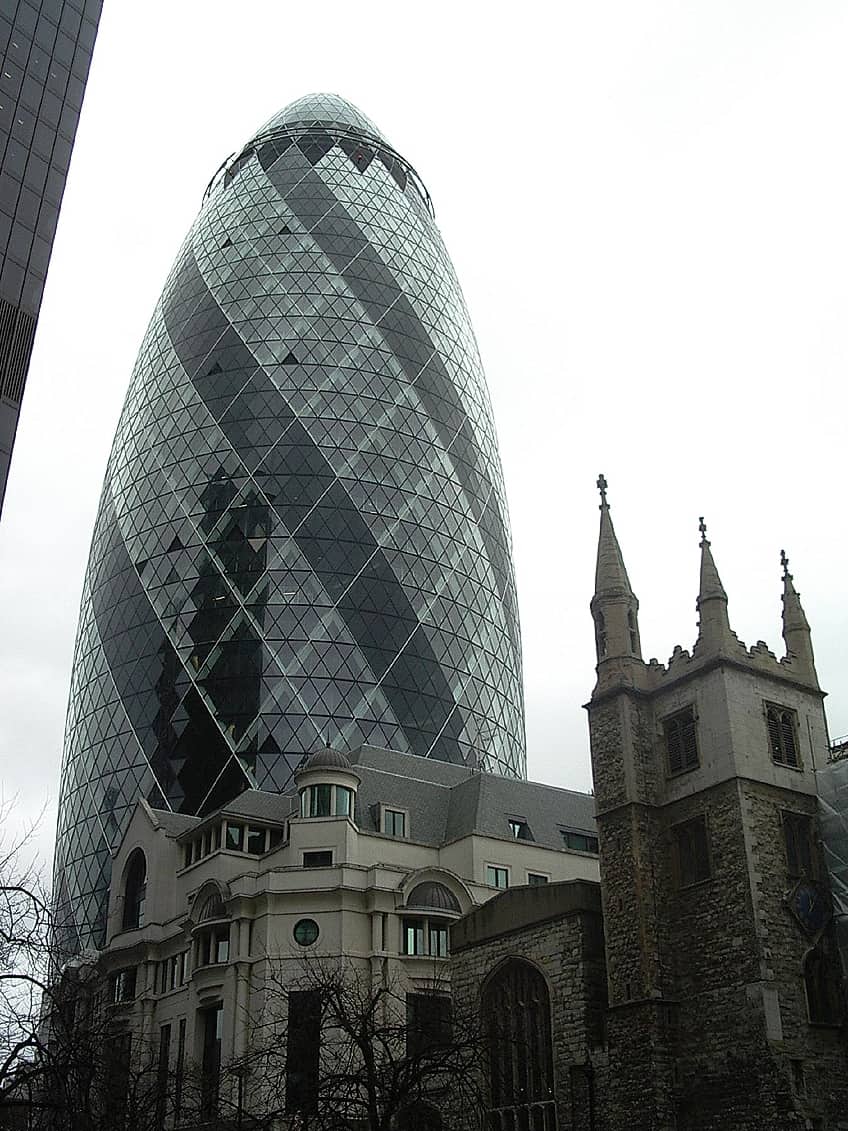
Beijing National Stadium (Birds Nest) (2008)
| Year of Construction | 2008 |
| Architect | Herzog & de Meuron |
| Location | Beijing, China |
The Beijing National Stadium, also known as the Bird’s Nest, was designed for the 2008 Olympics. The intertwining steel structure was inspired by the randomness of bird nests, which contributes to the aesthetics and the load-bearing capabilities of the stadium, making it both resilient and visually distinctive.
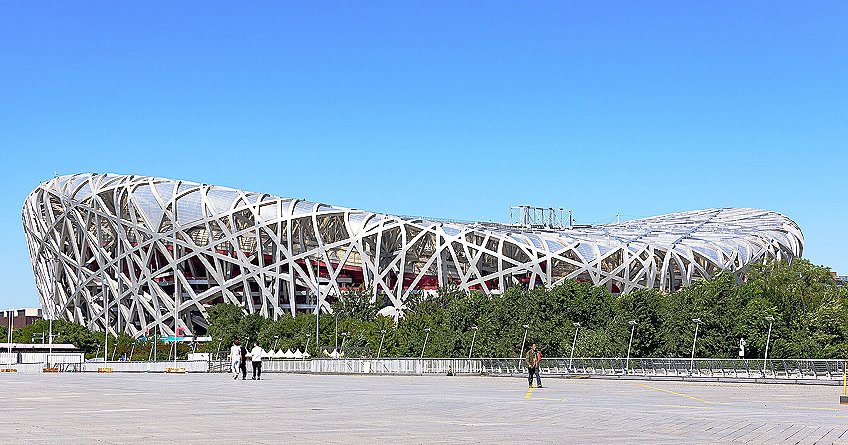
Environmental Impact and Future Directions
Biomimicry has a profound implication on environmental sustainability and urban development. It offers innovative approaches to architecture that promote energy conservation and integration with local ecosystems.
Sustainable Architecture and Ecosystems
Sustainable architecture aims to minimize the environmental impact of buildings by optimizing energy use and leveraging renewable resources. Biomimicry in sustainable architecture is exemplified by designs that emulate the innate efficiency of natural systems. One notable example is the design of buildings that mimic the natural cooling mechanisms found in termite mounds, thereby reducing reliance on artificial air conditioning and conserving energy.
Additionally, these nature-inspired buildings are often constructed with materials and methods that are environmentally friendly, reducing their overall carbon footprint.
- Energy efficiency: Incorporating design solutions like natural ventilation systems akin to termite mounds or the Eastgate Centre in Harare, Zimbabwe.
- Materials: Utilizing renewable or biodegradable materials that have minimal environmental impact.
The Future of Biomimicry in Urban Planning
The integration of biomimicry in urban planning points towards a future where cities embody regenerative design—systems that restore and replenish themselves and their surroundings. This approach doesn’t just aim for sustainability, but it also strives for cities that can positively impact the environment. Future biomimetic projects could see the creation of self-cleaning surfaces inspired by lotus leaves or building facades designed like leaves for better light absorption and energy conversion.
- Adaptive reuse: Revitalizing existing structures with biomimetic features to enhance their performance and extend their life cycle.
- Regenerative landscapes: Designing urban spaces that support biodiversity and water conservation, contributing to the ecological health of the urban environment.

Biomimicry architecture epitomizes the harmony between human innovation and natural wisdom, offering a pathway to sustainable, resilient, and aesthetically captivating built environments. As we navigate the challenges of urbanization, climate change, and resource depletion, the principles of biomimicry inspire us to look to nature as a mentor, learning from its billions of years of evolutionary experimentation. By continuing to integrate biomimetic strategies into architectural practice, we not only honor the intricate beauty of the natural world but also pave the way towards a more regenerative and harmonious relationship between humanity and the environment. As we embrace biomimicry, we embark on a journey toward a future where architecture not only sustains life but thrives in collaboration with the ecosystems that sustain us all.
Frequently Asked Questions
How Does Biomimicry Influence the Design of Buildings?
Biomimicry influences building design by encouraging architects to seek sustainable solutions through nature’s time-tested patterns and strategies. This approach means that structures don’t merely mimic nature aesthetically but also functionally, optimizing energy use, reducing waste, and enhancing livability.
How Are Natural Structures Emulated in Biomimicry Architecture?
In biomimicry architecture, natural structures are emulated by abstracting the underlying principles of biological forms, processes, and ecosystems. Architects and designers examine elements such as the self-cooling mechanisms of termite mounds or the load-bearing efficiencies of honeycomb structures to inspire innovative and sustainable architectural solutions.
Isabella studied at the University of Cape Town in South Africa and graduated with a Bachelor of Arts majoring in English Literature & Language and Psychology. Throughout her undergraduate years, she took Art History as an additional subject and absolutely loved it. Building on from her art history knowledge that began in high school, art has always been a particular area of fascination for her. From learning about artworks previously unknown to her, or sharpening her existing understanding of specific works, the ability to continue learning within this interesting sphere excites her greatly.
Her focal points of interest in art history encompass profiling specific artists and art movements, as it is these areas where she is able to really dig deep into the rich narrative of the art world. Additionally, she particularly enjoys exploring the different artistic styles of the 20th century, as well as the important impact that female artists have had on the development of art history.
Learn more about Isabella Meyer and the Art in Context Team.
Cite this Article
Isabella, Meyer, “Biomimicry Architecture – The Future of Sustainable Design.” Art in Context. March 5, 2024. URL: https://artincontext.org/biomimicry-architecture/
Meyer, I. (2024, 5 March). Biomimicry Architecture – The Future of Sustainable Design. Art in Context. https://artincontext.org/biomimicry-architecture/
Meyer, Isabella. “Biomimicry Architecture – The Future of Sustainable Design.” Art in Context, March 5, 2024. https://artincontext.org/biomimicry-architecture/.


